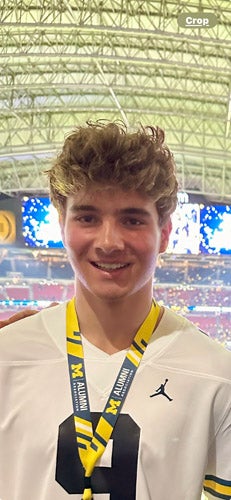Derek Bukowski
Pronouns: he/him
Research Mentor(s): Donna Martin
Research Mentor School/College/Department: Pediatrics-Genetics / Medicine
Program:
Authors: Derek Bukowski, Jingxia Gao, Jennifer Skidmore, Donna Martin
Session: Session 2: 10:00 am – 10:50 am
Poster: 31
Abstract
CHD7 AND SOX2 COOPERATE TO REGULATE DEVELOPMENT OF THE COCHLEA Derek Bukowski1, Jingxia Gao2, Jennifer Skidmore2, Donna Martin2,3 1UROP from College of Literature, Science, and Arts, 2Department of Pediatrics, 3Department of Human Genetics, University of Michigan CHD7, a chromatin remodeler, is highly expressed in the developing ear. Pathogenic variants in CHD7 are the cause of CHARGE syndrome, which causes ear malformations as well as other symptoms. Sox2, a pioneer transcription factor, is one of the first genes to be activated in the cells that will become the neurosensory elements of the ear. These neurosensory elements are critical to detect sound as well as maintain balance. Sox2 is additionally expressed after the ear has been fully developed, suggesting it plays a role in both formation and maintenance of the ear. It is crucial that we develop an understanding of the effects of these genes to develop potential treatments in the future. Understanding the effects of these genes can also allow for further research of potential interactions between these genes in other organs. The proteins produced by both Chd7 and Sox2 are known to have direct interactions in neural stem cells. However, whether Chd7 and Sox2 interact in the developing inner ear is unknown. Our research showed that Chd7 and Sox2 are co-expressed in the developing otocyst and ganglion. In the otocyst of E10.5 embryos, Sox2 expression is dependent on Chd7 whereas Chd7 expression is independent of Sox2. Double heterozygous (Chd7Gt/+;Sox2CreER/+) mice exhibit early postnatal death and severe developmental defects in both their vestibular and auditory structures, including shortened cochleae. It is unclear whether the basal or apical part of the cochlea or both are underdeveloped. Since the cochlea has a tonotopic structure, the frequencies of sound that are affected are directly related to which part of the cochlea is underdeveloped. To test this, we synthesized in-situ probes for the basally expressed gene Alpha-2-Macroglobulin (A2M) and apically expressed gene Follistatin (Fst). We showed that both in-situ probes label mRNAs in the ear, and will proceed to directly compare their expression in wild type vs. double heterozygous (Chd7Gt/+;Sox2CreER/+) mice to further understand the effects of Chd7 and Sox2 interactions.




